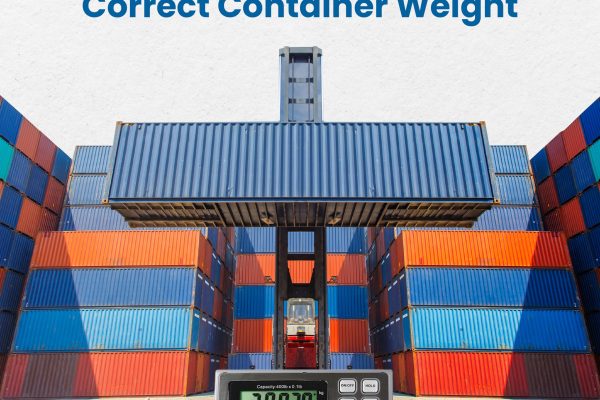What is Verified Gross Mass (VGM)?
Australian legislation requires shippers to provide an accurate gross mass on maritime shipping documents. Under the SOLAS (Safety of Life at Sea) rules, a packed container cannot be loaded onto a ship unless the master and the port terminal operator have obtained the verified gross mass (VGM) of the container, prior to the listed cut-off date.
Providing a VGM for a container allows the captain to plan ship loading. This ensures that the vessel is stable, hull strength and stack weights are not exceeded and lashing arrangements are effective. Incorrectly declared weights can result in container collapse, personal injury, and damage to equipment.
Responsibility of the Shipper
The shipper is responsible for obtaining and documenting the VGM of a packed container. According to the International maritime Organisation (IMO), “shipper” means a legal entity or a person named on the Bill of Lading as shipper. The shipper may also be known as the sender or consignor.
WHAT ARE THE REQUIREMENTS?
Methods of verifying gross mass
The shipper is obliged to verify the gross mass of the containers carrying their cargo by either of two permissible weighing methods before these containers can be loaded on a vessel.
Method 1
Requires weighing the container after it has been packed to determine the real weight of the container including tare. This will often involve using a weighbridge.
Method 2
Requires weighing the whole cargo and contents, including pallets & packing, then adding that figure to the container’s tare weight, as indicated on the door end of the container.
In both methods, equipment meeting prescribed standards of accuracy must be used. The weighing equipment must either comply with existing requirements used for trade purposes under the National Measurement Act, or the equipment must be calibrated to accuracy standards approved by the Australian Maritime Safety Authority (AMSA).
WHERE & WHEN SHOULD IT BE DECLARED?
Once a shipper has verified the weight of the container (using one of the two methods) this weight must then be specified on the shipping documents and signed by the shipper. It can be an electronic signature or the name of the authorised person.
The Pre-Receival Advice (PRA) is the most commonly used document by shippers to provide the gross weight of the container.
The shipper must ensure the VGM is communicated in shipping documents sufficiently in advance to be used in the preparation of the ship stowage plan. This needs to be prior to the container arriving at the terminal gate.
CONSEQUENCES OF NOT DECLARING THE CORRECT INFORMATION
If a container arrives at the gate of a terminal with shipping documentation that does not include the mandatory information on the PRA, it will be denied access for loading.
The Heavy Vehicle National Law (HVNL) provides that every party in the supply chain has a duty to ensure the safety of their transport activities. Container ship operators have the authority to impose penalties under AMSA’s Marine Order 42, and so do stevedores.
Leading Australian stevedore, Patrick Terminals, uses a weighing device, called the Pondus Stand, to check the weight of import and export shipping containers and they impose a penalty if they identify discrepancies of plus or minus one tonne (+/- 1t).
The fine, which amounts to several hundreds of dollars, is placed on the relevant transport cartage company for imports, or the shipping line in the case of exports.
Importers
Under international rules, the accuracy of the VGM obtained for a container is the responsibility of the shipper and can be monitored by the relevant regulatory authorities at either origin or destination. If you are an importer here in Australia, that means your overseas supplier should be accurately weighing containers before they ship them.
Do you have policies/procedures in place with your suppliers? If you do not have a VGM document trail, you will be liable if a discrepancy of more than one tonne is detected on arrival here. Please do not hesitate to contact us if we may be of assistance in liaising on your behalf with exporting shippers at the point of origin.
Exporters
Once a container has entered the Terminal, the stevedores are not able to alter the status of weight or VGM. If any of the mandatory fields on the PRA are missing information or cannot be verified, then it will be rejected. Export shippers can alter the PRA prior to arrival at the terminal; however the PRA will then have to be re-submitted with the correct VGM.
For up-to-date information about weighing, loading and shipping FCLs, talk to us here at Colless Young. As Customs Brokers and International Freight Forwarders, we offer you correct, professional advice on all your import and export containers.
Contact Andrew, email enq@collessyoung.com.au Tel: +61 7 3890 0800.

